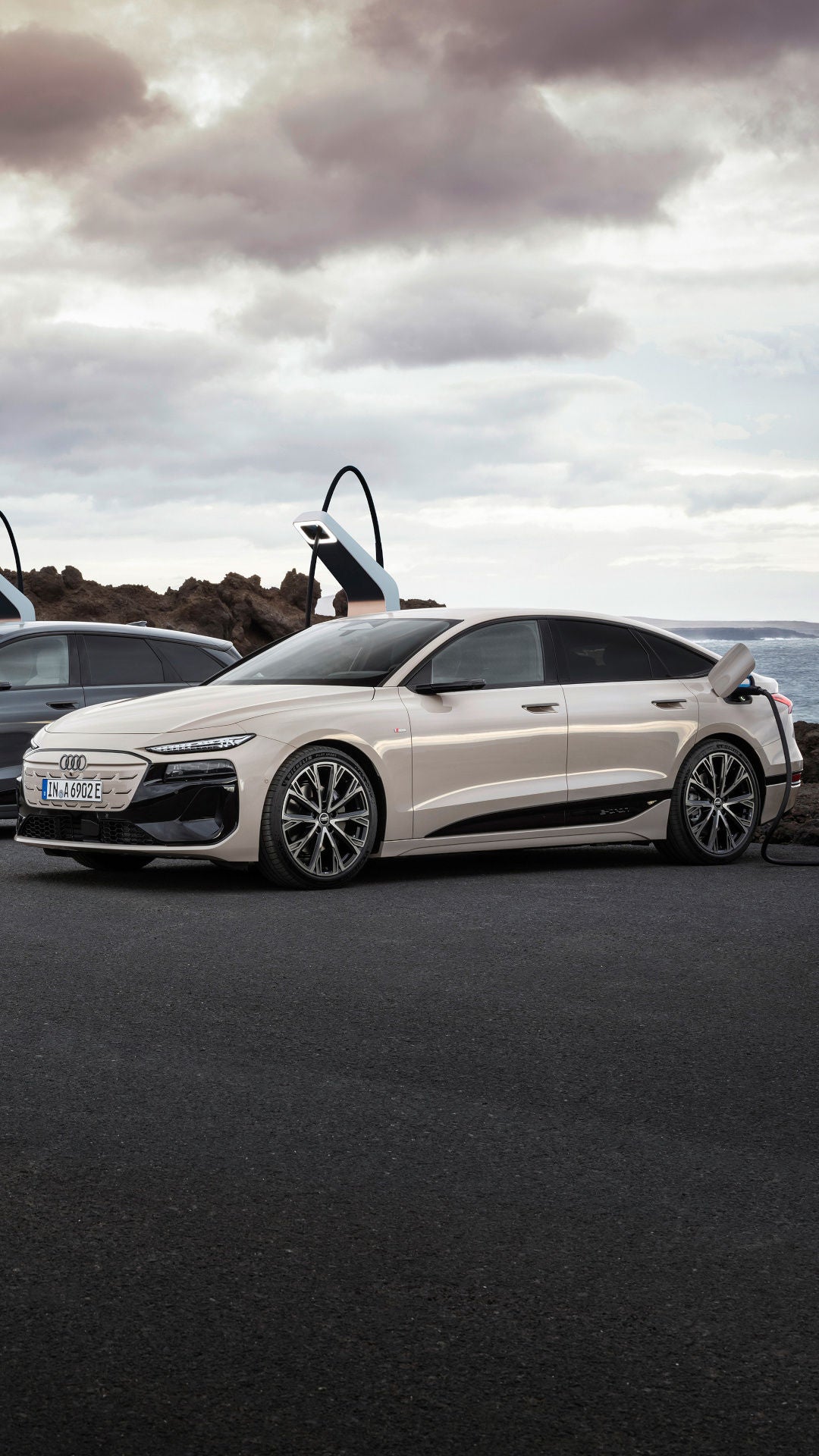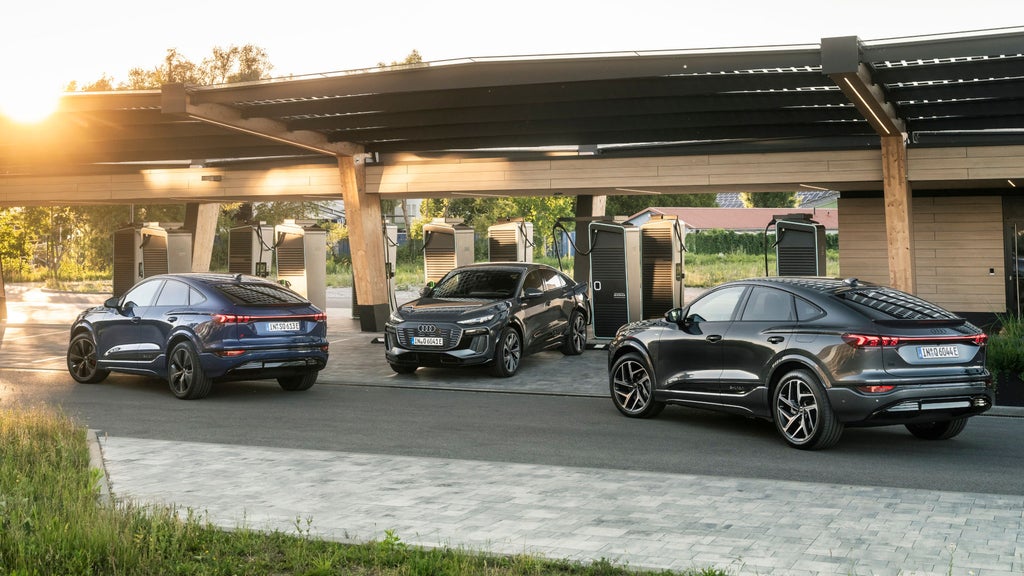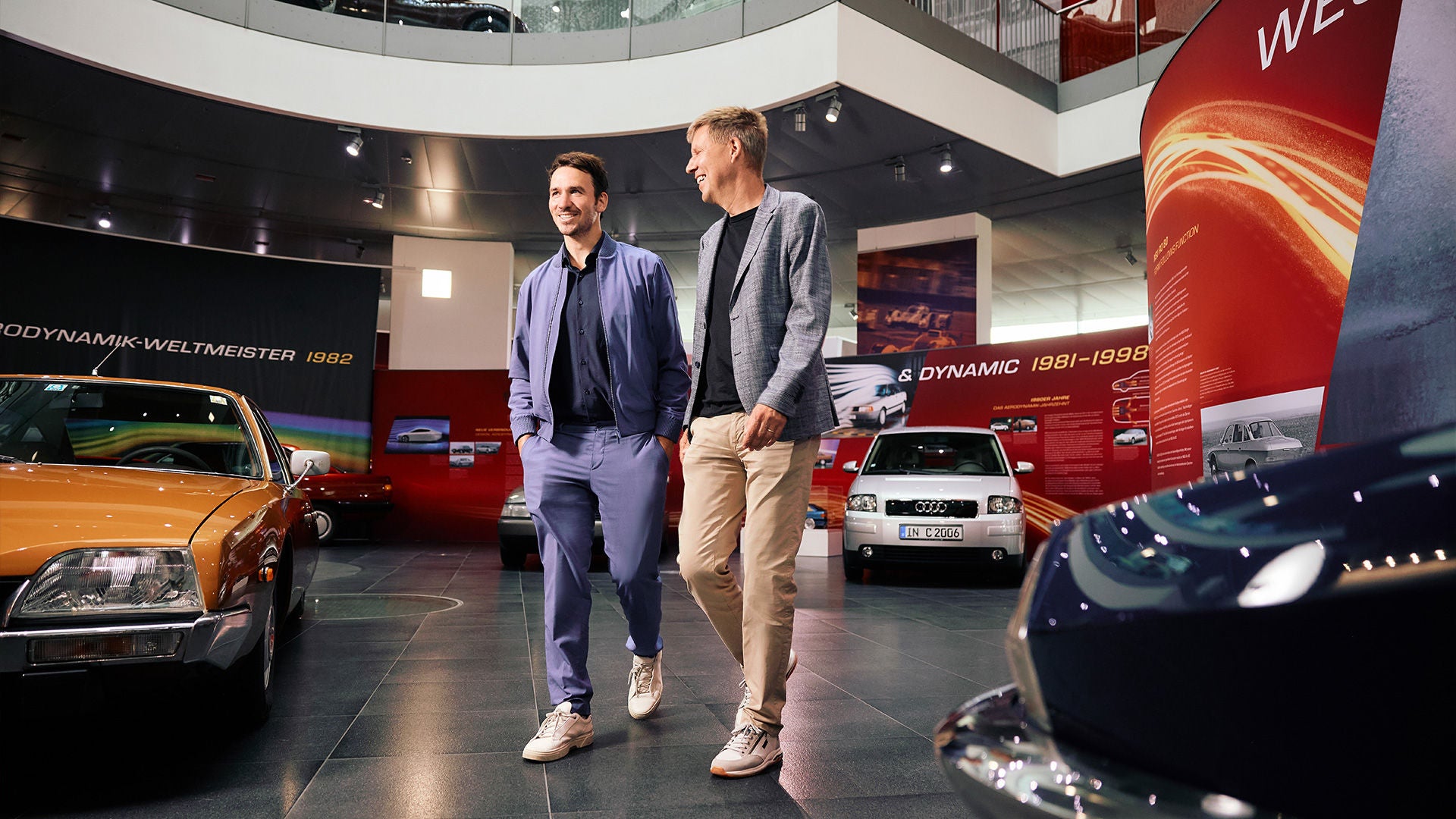
Audi A6 Sportback e-tron performance: Electric power consumption (combined): 15.9–14.0 kWh/100 km; CO2 emissions (combined): 0 g/km; CO2 class: A
Audi A6 Avant e-tron performance: Electric power consumption (combined): 17.0–14.8 kWh/100 km; CO2 emissions (combined): 0 g/km; CO2 class: A
Audi S6 Sportback e-tron: Electric power consumption (combined): 16.7–15.7 kWh/100 km; CO2 emissions (combined): 0 g/km; CO2 class: A
Electrification
Consistently electric into the future
Audi is uniting the still rather new world of electric mobility with its more than 100 years of experience in building premium cars. What does that mean? On the one hand, customers should be able to find the right electric vehicle for their needs – whether they’re looking for sporty, luxurious or compact. On the other hand, for Audi it’s about so much more than just a vehicle with electric drive: people and their needs are always the focal point for all e-tron models.
A clear strategy has already enabled Audi to concentrate the strength of the company – with regard to products and services as well as production. As part of the corporate strategy, Audi is preparing all production sites to manufacture electric cars in a step-by-step process. The company is also unambiguously committed to electric mobility in its investment planning: at around €28 billion, Audi will invest two-thirds of its upfront expenditure for the period from 2023 to 2027 in the future fields of electrification and digitalization.

Top models in the Audi electric SUV portfolio: the Audi Q8 e-tron* family.
Production plant for fully electric Audi models in China
With a state-of-the-art factory for fully electric Audi models in the metropolis of Changchun, China, Audi is laying the groundwork for a fully electric future on the Chinese market. With an annual capacity of more than 150,000 vehicles, the production site will make an enormous contribution to the electrification of the Audi product portfolio in China from the end of 2024.

Charging – just as easy as refueling
In the past, automakers limited themselves to the core business of manufacturing cars – providing gasoline and diesel fuels was handled by other companies. Today, in order to become a leading provider in the field of electromobility, it is not enough to focus only on the vehicles themselves.
AUDI AG considers it part of its responsibility to factor in the levers that are effective in the success of electric mobility: a comprehensive offering of charging options, a powerful charging infrastructure and the type of electricity the electric vehicles can “fuel up on” there. Sustainable charging is part of the business model of the Four Rings. Additionally, the goal is for the proportion of regeneratively produced electricity to increase along with the rising share of electric cars.
Electric mobility also needs the right charging solutions to be a success and to be accepted by customers. This is why the company – in the form of the Audi charging hubs – is implementing modern fast-charging stations with high-power charging spaces, which can be reserved by Audi customers and offer an optional adjacent lounge area. There, customers can enjoy an accessible premium charging experience – time spent charging becomes time when they can truly “recharge” themselves. Fast-charging stations prove that, at Audi, the focus is on people and their needs.
2nd November 2023
2nd November 2023
Expansion of worldwide charging networks
In the age of electric mobility, Audi wants to offer its customers not just a premium product, but a complete premium ecosystem - and charging technologies are at its core. A comprehensive range of charging solutions – for charging both in public places as well as at home, including an offer of green electricity – is therefore the goal of Audi.

Audi SQ6 Sportback e-tron: Power consumption (combined) in kWh/100km: 18.0–17.2; CO2 emissions (combined)in g/km: 0; CO2 emission class: A
Audi Q6 Sportback e-tron: Power consumption (combined) in kWh/100km: 18.9–15.6; CO₂ emissions (combined)in g/km: 0; CO₂ emission class: A
Audi SQ6 Sportback e-tron: Power consumption (combined) in kWh/100km: 18.0–17.2; CO2 emissions (combined)in g/km: 0; CO2 emission class: A
Audi Q6 Sportback e-tron: Power consumption (combined) in kWh/100km: 18.9–15.6; CO₂ emissions (combined)in g/km: 0; CO₂ emission class: A
With Audi charging, customers have access throughout Europe to more than 600,000 charging points in 27 European countries as well as to the IONITY fast-charging network, a joint venture that the Volkswagen Group, with Porsche and Audi, is involved in. IONITY already offers drivers of electric vehicles Europe’s largest network of high-power charging (HPC) points with around 4,500 fast charging points (as of: February 2025) with the highest possible charging capacity under the current technical conditions. Audi is also collaborating with partner companies in China and the USA to develop the charging infrastructure. The electric transformation at Audi is in high gear – all around the world.

.jpg)
